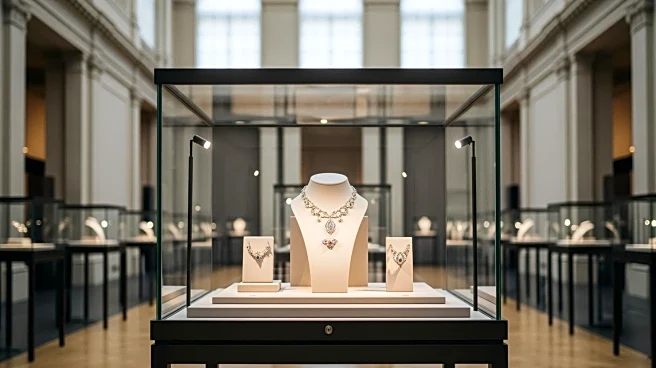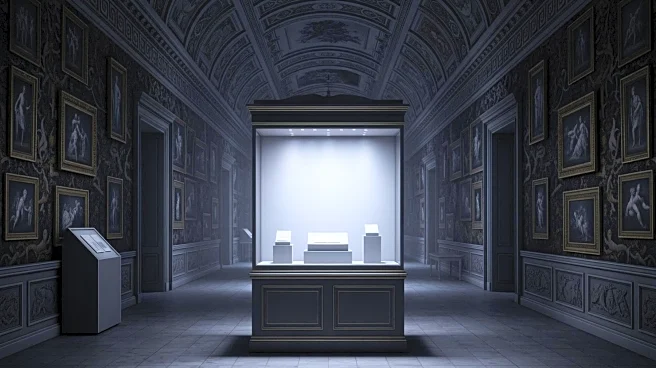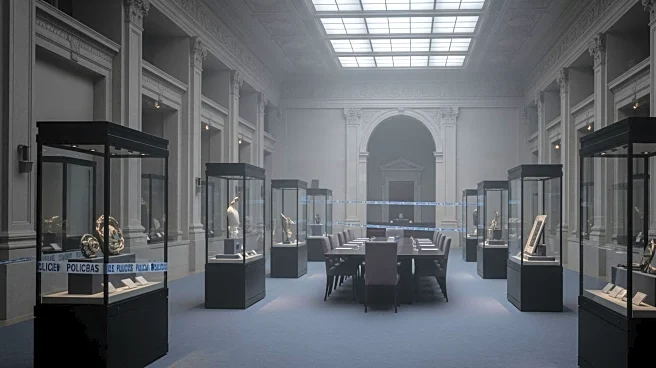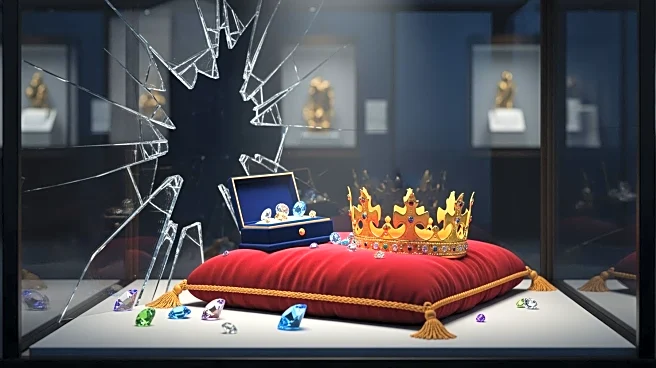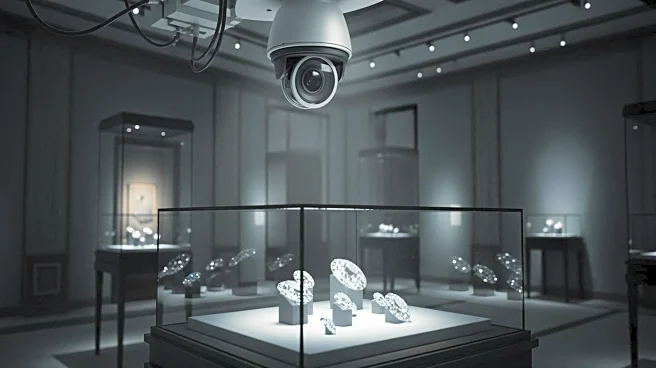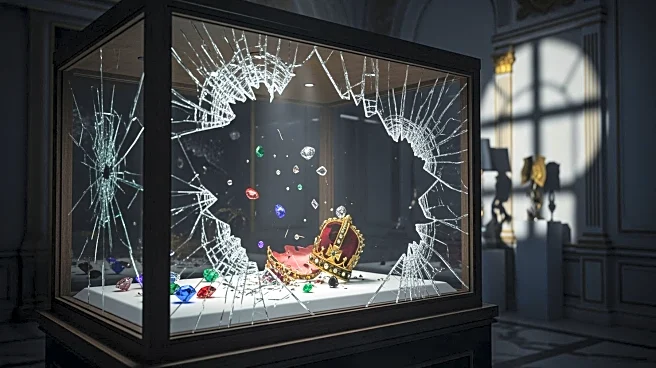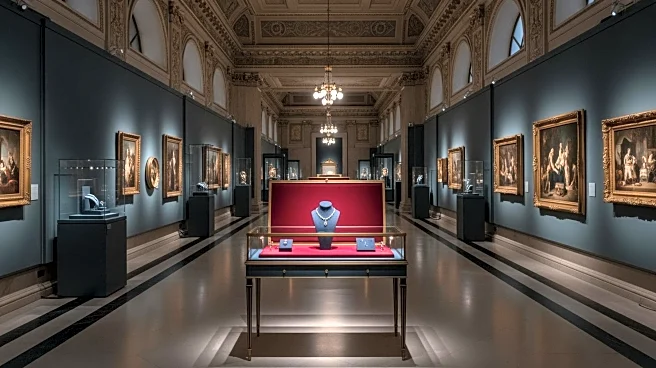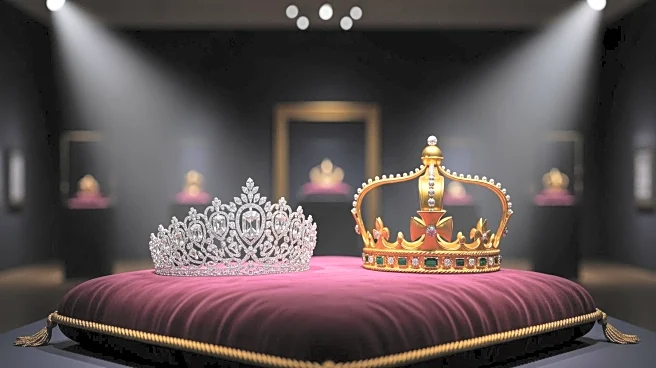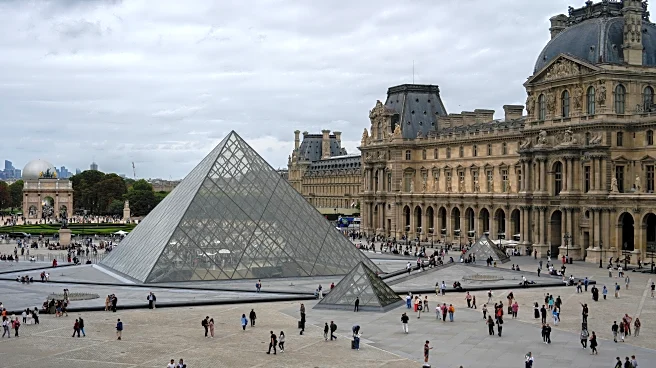What's Happening?
In a bold daylight heist, thieves executed a meticulously planned operation at the Louvre Museum in Paris, stealing priceless Napoleonic jewels. The theft occurred shortly after the museum opened, with
visitors already inside. The thieves used a basket lift to access the museum's facade, forced a window, and smashed display cases to seize the jewels. Among the stolen items were a parure with a matching necklace and earrings, a brooch, and two crowns, all of significant historical value. The operation lasted only four minutes, highlighting vulnerabilities in the museum's security. The Louvre, already under strain from overcrowding and understaffing, closed for the rest of the day to allow for a forensic investigation.
Why It's Important?
This heist underscores significant security challenges faced by major cultural institutions like the Louvre, which is the world's most-visited museum. The theft not only represents a substantial cultural loss but also raises questions about the adequacy of security measures in place to protect invaluable artifacts. The incident has political ramifications as well, with criticism directed at the French government for perceived lapses in safeguarding national treasures. The theft could lead to increased security measures and potentially impact tourism, as the Louvre is a major attraction. The loss of these jewels, which are unlikely to be recovered, represents a significant blow to France's cultural heritage.
What's Next?
Authorities are conducting a thorough investigation, examining the crime scene and reviewing CCTV footage to identify the perpetrators. The museum plans to enhance security measures as part of its ongoing modernization efforts. The incident may prompt broader discussions on museum security and the need for increased funding and staffing to prevent similar occurrences. The French government may face pressure to address these issues promptly to restore public confidence and protect cultural assets.
Beyond the Headlines
The heist highlights the tension between preserving cultural heritage and accommodating mass tourism. The Louvre's struggle with overcrowding and understaffing reflects broader challenges faced by cultural institutions worldwide. This incident may lead to a reevaluation of how museums balance accessibility with security, potentially influencing future policies and funding priorities. The theft also raises ethical questions about the illicit trade in stolen artifacts and the responsibilities of collectors and dealers in preventing the circulation of such items.
